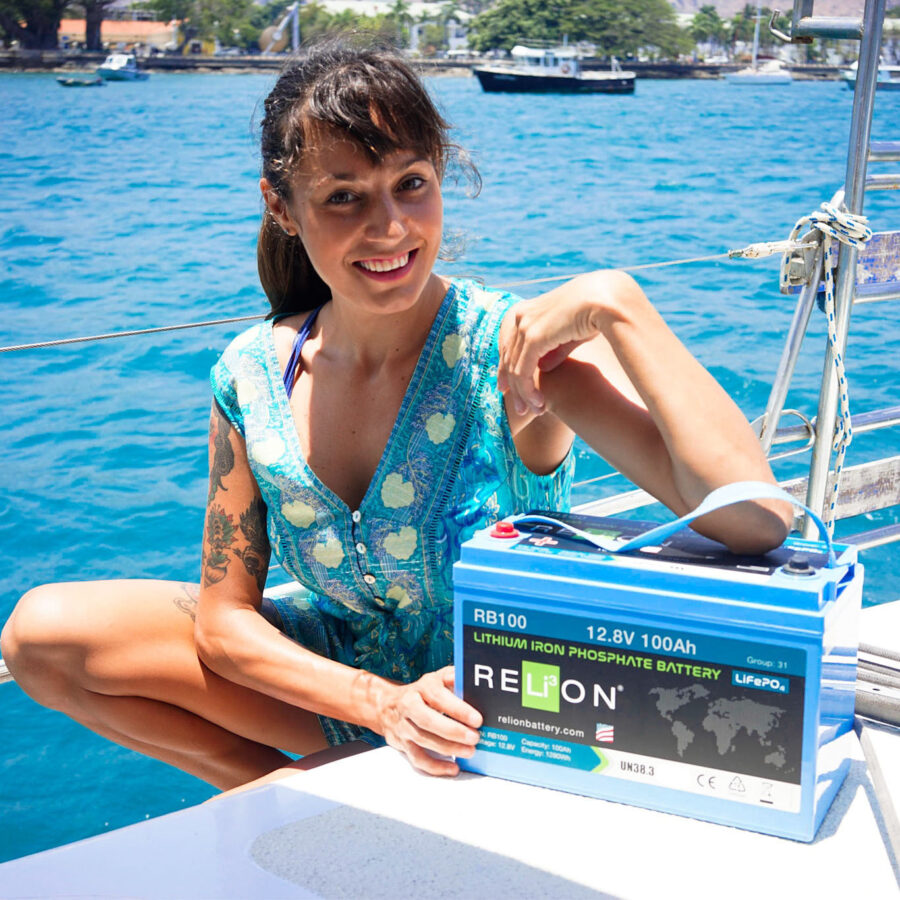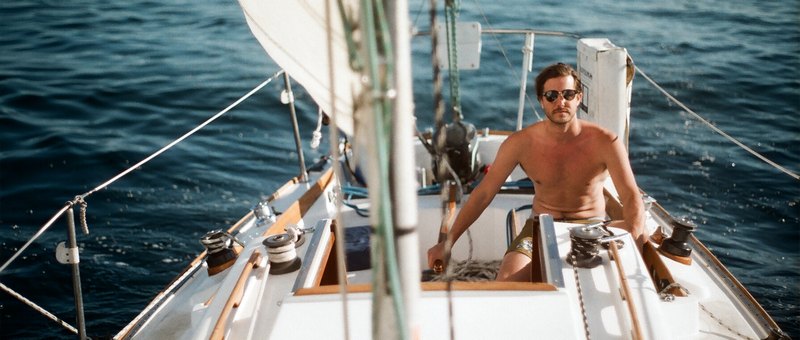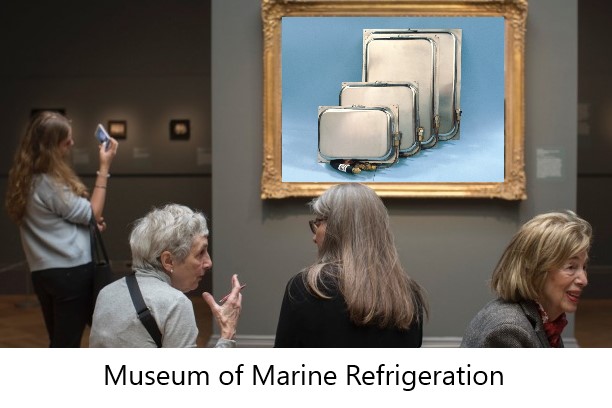Phone: (301) 352-5738
Email: info@CoastalClimateControl.com
Office | Warehouse:
1598 Whitehall Road, Suite D
Annapolis, Maryland 21409
about Frigoboat refrigeration I am so happy with your [4-pin] controller I could jump up and down scream and holler! I have a Danfoss 12v unit in my Bristol Bay 32' Salmon Gillnetter built in freezer fridge unit this solution was better than trying to redo the freezer box area thank you for your product Danfoss told me there was no con
The published wattage rating of solar panels is determined by testing with a machine that flashes a light with an intensity of 1,000 watts per square meter on to the panel as if the sun were directly overhead. This flash test, performed under standard temperature and air quality conditions, gives a theoretical maximum power output that might be possible from that panel under the most ideal conditions.
This may sound like a cheap marketing ploy, but in fact is done from a safety aspect, as the cable and safety devices (fuses, breakers, etc.) must be sized in accordance with the maximum power that the panel(s) might produce, especially in multiple panel arrays. Typically, a panel will produce nowhere near its rated output in normal use, except maybe occasionally and then only very briefly. Considering the above, and the multitude of ever-changing conditions in a real deployment, it is not practical to simply use the wattage rating of a solar panel as an indicator of what power output to expect over the course of a complete solar day; i.e. from sun-up to sun-down. So how can we estimate what size panels, and how many, we might need to satisfy our daily amp/hour consumption?
First it is necessary to differentiate between the three most common types of silicon cells in general use.
Choose from our selection of fresh and salt water pumps to serve your marine air-conditioning and refrigeration needs. We offer high-quality pumps for 12v, 115v, 230v, and 400v power supplies. If you don't see what you need, please contact us. Flo Jet 12v pump for smaller water pump needs at 1.5 gallons a minute, fresh or sea water. March pumps, Am
An increasingly popular question we hear at Boat Shows is "What size solar panel do I need to run the refrigeration on my boat?" Of course, this begs the question "What is your refrigeration's current draw?" which in itself may not have a set answer.
The current consumption of any refrigeration system is meaningless unless all the conditions are specified, i.e. box temperature, ambient temperature, water temperature, compressor speed, voltage, etc. The manufacturer's figures are simply average numbers; some manufacturers, like Frigoboat, attempt to give a true average figure, while others use their figures more as a marketing tool.
Making use of variable compressor speed, as Frigoboat does with the Merlin II and Guardian speed controls, and others do with the Danfoss/Secop AEO control module, brings even higher efficiency and lower overall power consumption in air- and keel-cooled systems, but is counter-productive in a pumped-water system. This is because the pump adds 25% to 35% extra current draw, and so it is best to run the compressor at full speed and get the job done as quickly as possible. The most efficient system is one using the Keel Cooler; no pump, no fan, and variable compressor speed can be used to gain even higher efficiency.
Daily consumption is measured in amp/hours per day, and you can get an idea of what to expect by using a watts meter, like Watts Up, on your refrigerator leads. These meters can tell you how many amp/hours per day a device is using, and it's best to use it over several days to get a daily average. The running consumption will vary dependent on conditions, as will the on/off cycle time, so you will need to be able to come up with an average daily amp/hr draw.
As a general rule of thumb, a solar panel with SunPower® cells will give approximately 1/3 of its rated wattage as a daily yield in amp/hrs. A panel with regular monocrystalline cells will produce about 1/4 of its wattage as daily amp/hrs, and a polycrystalline panel produces around 1/5 of its wattage rating in amp/hrs per day.
Let's take an example:
(as found in Section 6 of the Frigoboat manual) The F-type flat evaporators may be carefully bent on a minimum 1.5" radius to follow the shape of the icebox. This is best done by holding a section of suitably padded PVC pipe (with an outside diameter of 3.0" or greater) firmly down on the plate, and then carefully bending the section upwards with t
Which type of Solar Panel is best for Marine Installations?Monocrystalline; Polycrystalline; SunPower®
3 - 4 - 5 Remember these numbers. These are the factors by which you need to divide the rated wattage of a panel to give an estimate of the amp/hr daily yield, at 12v, that a panel might produce dependent on the type of cell.
For a panel with SunPower® cells, divide the watt rating by 3.
For a panel with regular monocrystalline silicon cells, divide the watt rating by 4.
For panels with polycrystalline cells, divide the watt rating by 5.
Example: If we have one of each type of panel, all rated at 100 watts, then the one with SunPower® cells will produce somewhere in the region of 33 amp/hrs per day; the one with regular mono cells will produce around 25 amp/hrs a day; and the panel with poly cells will produce 20 amp/hrs or so a day. (Note: This is assuming a good solar day, using a MPPT controller, and with a full time load). So why the difference?
SunPower® back-contact solar cells are currently the highest efficiency cells available for use in everyday applications at 22%+ rated efficiency. But they can be expensive and difficult to purchase. Genuine high-grade SunPower® cells are only sold to prestigous manufacturers in a few select markets, and significant quantities, a minimum 10,000 cel
While the claim may be that this type of panel has superior shade resistance, the results can be very different. FACT: The smaller the cell size, the less shading it requires to be 100% shaded. The same amount of shade that completely covers a small cell might only cover ¼ of a larger cell. Larger cells are better for shade resistance.FACT: If just
An essential component in the installation of solar panels on your vessel is a solar charge controller or regulator. This will regulate the voltage and current coming from your solar panels going to your battery. Most solar panels are 16-25 volts, so if there is no voltage regulation the batteries will be damaged from overcharging. Bear in mind that a fully charged 12v battery is around 12.7 volts at rest, but needs around 14.2 to 14.8 volts under charge. A solar panel has to put out at least that much voltage to be of any benefit, but if the panel voltage is not controlled and reduced it will cause serious battery damage.
Another point to keep in mind: solar panels provide power best when cool, under a clear sky, and in full sun; in other words in perfect conditions. But one can't count on that type of weather day after day, so solar panels have to be built to provide that extra voltage for when the sun is low in the sky, there is cloud cover, high temperatures, or heavy haze to ensure your solar output is not compromised. The truth is a 100 watt panel rated at per industry Standard Test Condition (STC) of 77oF and 1Kw/sq m irradiance will put out less watts when its surface temperature is 100oF degrees and when only 800 w/sq m irradiance is available, i.e. when it is in non-standard conditions.
So this is where the right solar charge controller can help. There are basically two types – PWM (Pulse Width Modulation) and MPPT (Maximum Power Point Tracking).
In Defense of Lithium Ion BatteriesYes, it's true; thermal runaway can and does happen in Valve Regulated Lead Acid (VLRA) Absorbed Glass Mat (AGM) batteries, and is not a new phenomenon afflicting Lithium Ion batteries alone. A Google search of "Thermal Runaway in AGM Batteries" will reveal enough technical papers on the subject to keep even the most techno-savvy occupied for a long while, and will save me trying to explain the why's and wherefore's here. The simple fact is that, given the right conditions, an AGM battery can, and will, start a self-perpetuating internal heating process (thermal runaway) that can end in catastrophic failure with the possibility of fire and explosion. So why is there so much negative publicity and bad karma surrounding Lithium Ion batteries, when AGM's are prone to much the same maladies?
The US Federal Government continues to offer a solar energy tax credit, applicable to your primary and second homes, i.e. your boat or RV! As long as there is a head and galley onboard and it is docked in the United States, your vessel or vehicle qualifies.
This federal tax credit, in place since 2005 (known as the Investment Tax Credit, ITC) has been extended yet again to its current expiration through 2034 for non-commercial installations. Best grab it while you still can!
There is much talk and discussion in certain forums about how to determine the correct refrigerant charge level for a capillary tube refrigeration system, but there is only one, simple method that will result in the perfect charge in a Frigoboat system; the frost-line method. Pressures and current draw can be monitored to confirm that these are within expected limits, but there is no better way to guage the refrigerant level than with the frost-line method.
Frigoboat R134a charge guidelines
GeneralThe following is intended to be a guide for a boat operator with average mechanical skills. It will describe what symptoms to look for in a correctly charged Frigoboat system so that an evaluation can be made as to whether service is required. No refrigerant gauges are necessary for this evaluation, and their use is required only for major repairs and for evacuating the system.
Warning!Never use, or allow a technician to use, anything other than pure refrigerant R134a in a Frigoboat system. Cans of refrigerant R134a with additives must never be used, nor must stand-alone additives be introduced into the system. These additives include but are not limited to: leak detecting fluid, leak stopper, dye, extra oil, conditioner, etc. Serious damage can result from the use of such products, which are designed for use only in auto air conditioning systems.
We handle many calls for troubleshooting help, and the vast majority end up being electric problems, mostly with the boat’s power supply to the Frigoboat unit. While the voltmeter on the distribution panel might show more than adequate power, it is what comes out of the end of the two wires at the Frigoboat unit that counts, and there is a lot of potential in the wiring for gremlins to creep in and spoil the party.
Power supply testing on Danfoss DC powered refrigeration systems
To properly test the power supply to a Danfoss/Secop powered 12v or 24v system, the following testing procedure must be carried out. This will establish whether the power supply feeding the system is free of bad, loose and/or high-resistance connections. Reading the voltage on the panel or at the batteries is meaningless,
The couplings used on Frigoboat component refrigeration systems are proprietary to Frigoboat and are designed for long and trouble-free service. Some time ago it was noticed that there was an increase in reports of leaking o-rings, and many were found to be caused by the coupling becoming excessively hot, damaging the rubber in the primary O-ring. Causes of excessive heat can be:
- badly fouled Keel Coolers;- using a Keel Cooled system when out of the water and without temporary water cooling;- inadequate ventilation of an air cooled unit;- poor or restricted water flow in a pumped-water system.
The type of rubber in the O-rings was subsequently changed to better handle excessive heat, but damage may still result if any of the above situations are allowed to prevail.
All compression refrigeration systems depend on some device to separate the high and low pressure sides of the system. In a capillary (cap) tube system, this is the capilliary tube itself, which, as the name implies, has an extremely small micro-bore at its center that is less than the diameter of a needle. There are two main issues that can occur
If there are instructions, manuals, etc you need, but don't see them here, please contact us and we will do our best to find the answers for you. Refrigeration manuals and operating instructions Frigoboat Installation and Instruction ManualStandard manual explaining how to install a Frigoboat refrigeration system and giving basic instruction with t
Watch our YouTube videos, see our techs demonstrate how to troubleshoot your marine refrigeration system. Click on a link below to download further details to help you solve a problem.If you can't find what you're looking for, please contact us. System Questions: Frigoboat Compressor Troubleshooting Guide with YouTube Videos So what makes you
Frigoboat Price Lists: Frigoboat Price MatrixFind your box size, choose correct evaporator, select heat-exchange method, see complete system price Frigoboat Stainless Steel Cabinet Price ListFind pricing for the cabinets. Price for your choice of compressor/condenser additional. Frigoboat compressor/condenser dimensional drawings: Click on a link b
Are you a boat owner, or soon-to-be boat owner, with questions about your vessel's systems or how to make life even better on board? Let us help you find those answers. For example: Water-cooled vs air-cooled refrigeration, see "Which Condensing unit sho
Are you a boat owner, or soon-to-be boat owner, with questions about your vessel's systems or how to make life even better on board? Let us help you find those answers. For example: Water-cooled vs air-cooled refrigeration, see "Which Condensing unit sho






